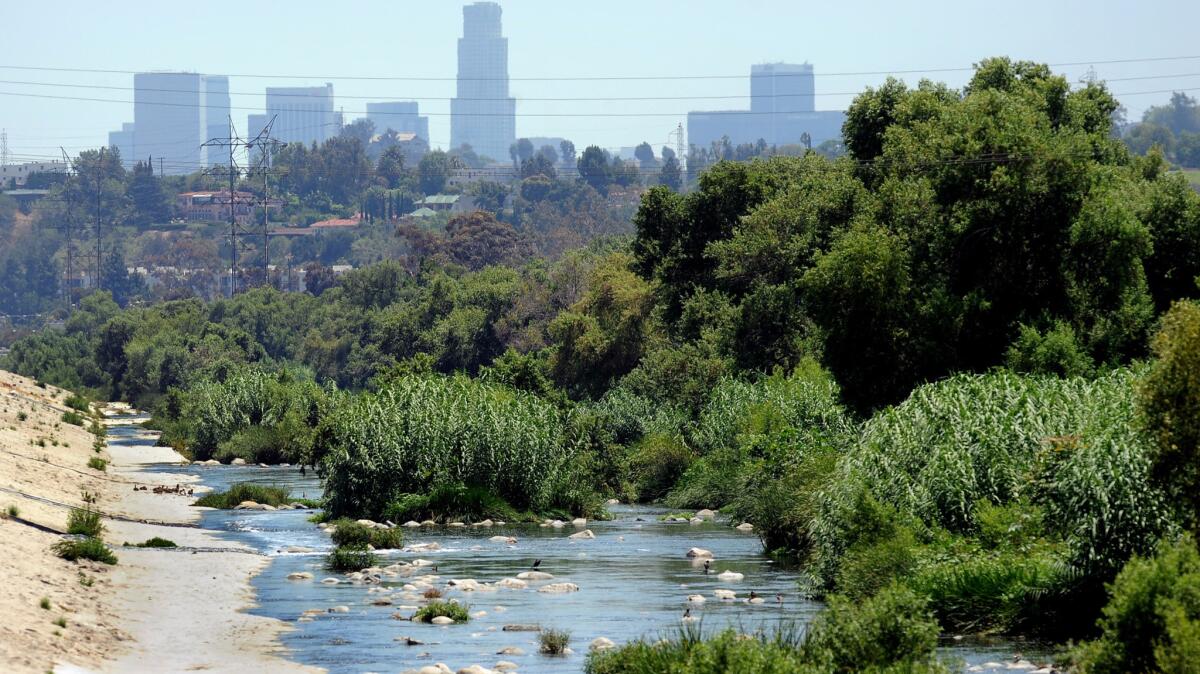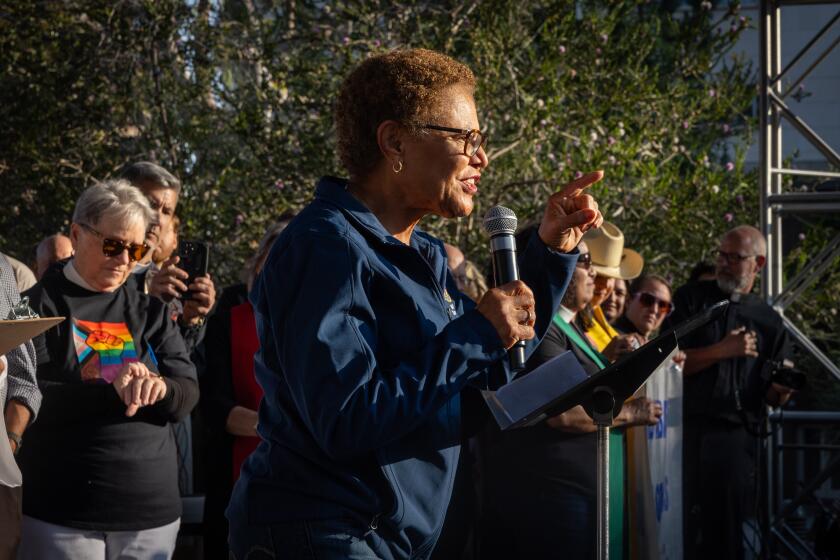Popular recreation spots along the L.A. River have poor water quality, report says

- Share via
Popular recreation spots along the Los Angeles River suffer from poor water quality and could pose a health risk to people who swim or kayak in the area, according to a new report issued by environmental group Heal the Bay.
The study, released Wednesday, tested water samples weekly for bacteria at three sites within two recreation zones in the Sepulveda Basin and Elysian Valley areas of the river over a three-month period last summer. Heal the Bay began monitoring freshwater recreational areas along the L.A. River last year.
Bacteria levels varied among the river sites, but were high overall, the study said.
Samples for Enterococcus, a type of fecal indicator bacteria, exceeded federal standards 100% of the time at Rattlesnake Park and Steelhead Park in Elysian Valley. The Rattlesnake Park site also suffered from a 67% exceedance rate for E. coli, the report said.
While not harmful themselves, the bacteria indicate the possible presence of pathogenic bacteria, which have been found to cause ear infections, respiratory illnesses and gastrointestinal illness for people who come in contact with the water, experts said.
Much of the water in the L.A. River is treated and sanitized wastewater from the city of Los Angeles’ Tillman Reclamation Plant in Van Nuys. About 16 million gallons of water are cleaned there each day.
“Tillman’s discharge is not considered a source of bacterial pollution, and without its flow there would likely be no kayaking of the Los Angeles River,” according to the study.
There are several contributors to the harmful bacteria in recreational zones along the river, including urban runoff, leaks and flows from wastewater collection systems and failing septic systems. Other bacteria sources include pets, horses and human waste.
“Heal the Bay is thrilled about the energy and excitement around restoring the river, but it’s critical that water quality improvements don’t get left out of the conversation,” said Katherine Pease, Heal the Bay’s watershed scientist, in a prepared statement.
Heal the Bay suggests Angelenos avoid swimming in the river, especially dunking their heads underwater.
“We envision a swimmable L.A. River one day but current water quality is not yet at a healthful level. If there is any water contact, rinse off with soap and water afterward,” the report said.
Kayakers and anglers should limit their contact with the water, the scientists said, especially avoiding hand-to-face water contact. People should not go into the water “with an open wound, if immunocompromised, or after a rainfall.”
“The public has a right to know about water quality conditions in the L.A. River so that they can make informed decisions on how to minimize their risk of getting sick,” said Rita Kampalath, science and policy director for Heal the Bay. “There is an elevated public health risk if you recreate in these areas.”
Kampalath stressed that despite the potential risk, the organization is supportive of recreation in and around the river.
“We just want to make sure water quality isn’t lost in that process,” she said.
For more local and breaking news follow me on Twitter: @sarahparvini
More to Read
Sign up for Essential California
The most important California stories and recommendations in your inbox every morning.
You may occasionally receive promotional content from the Los Angeles Times.














